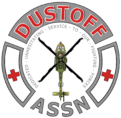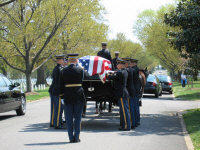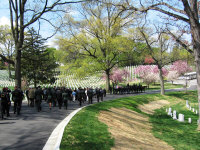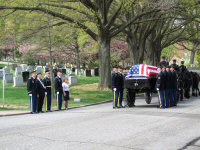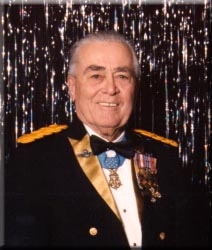
Born September 3, 1922 and raised in Etna, Pa., Novosel became an aviation cadet in the U.S. Army Air Forces when he was 19 years old. After earning his commission and pilot wings on December 15, 1942, he instructed in the North American AT-6 Texan at Laredo Army Air Field, Texas. By December 1944, Novosel had logged more than 800 hours in the Consolidated B-24 Liberator supporting aerial gunner training. Then, he went to Maxwell Air Force Base, Alabama, to qualify in the Boeing B-29 Superfortress.
In July 1945, following crew training in New Mexico, Novosel left for Tinian Island in the Pacific where he flew four combat missions with the 58th Bombardment Wing (Very Heavy). After the end of World War II, he flew two missions to drop food to Allied prisoners of war in Japan. During the Japanese surrender ceremony on the USS Missouri, Novosel commanded a B-29 in a 462-ship fly-over. He then took command of the 99th Bombardment Squadron (Very Heavy) and remained in the Pacific until the fall of 1947.
Following his service in World War II he was assigned to Eglin AFB, Florida, where he was a B-29 test pilot. In 1949, Novosel left active duty and joined the Air Force Reserve. He was recalled to active duty during the Korean War, at the grade of Major and attended the Air Command and Staff School.
Novosel was promoted to Lt. Col. with the Air Force Reserve in 1964 and requested active duty for service during the Vietnam War. When informed that the Air Force was over-strength in its senior grades, he vacated his position with the Air Force Reserves and accepted an appointment as a Warrant Officer Aviator with the U.S. Army.
Returning to combat as a “DUSTOFF” (Medevac) helicopter pilot, he served two tours in South Vietnam, flying 2,543 missions in the Bell UH-1 Huey while airlifting nearly 5,600 medical evacuees.
On October 2, 1969, Novosel received word of wounded South Vietnamese soldiers pinned down by a large enemy force. Flying without air cover, he encountered ground fire so intense it forced him away six times. Courageously, he completed 15 hazardous extractions. On the last, just as a wounded soldier was pulled into the aircraft, the enemy unleashed a hail of fire directly at Novosel. Wounded, he momentarily lost control of the aircraft, but recovered and flew to safety. In all, he saved 29 men. He was nominated for and later received the Medal of Honor for these actions.
In March 1970, a UH-1 helicopter piloted by Novosel’s son was shot down. The senior Novosel heard the “Mayday” call from 15 minutes away. With assurance from the aircraft commander that his son’s crew had survived the crash and found shelter, Novosel completed his own mission before flying to their aid. The younger Novosel returned the favor seven days later when his father was shot down. Just 19 at the time, Mike Jr. flew to his father’s rescue.
Following his heroic service in Vietnam, he served 3 years at Fort Bragg, North Carolina, as chief pilot for the Army’s Golden Knights parachute team. On occasion, he jumped with the team to maintain proficiency.
Novosel’s next assignment was at Fort Rucker where he was an author and lecturer at the Warrant Officer Career College until 1976. An assignment in Korea as the Second Infantry Division’s Aviation Safety Officer followed. In May 1983, Novosel was assigned new duties as the Aviation Center Senior Training, Advising and Counseling (TAC) Officer with the Warrant Officer Candidate Program.
At the time of his retirement on February 28, 1985, Novosel was the last active duty military aviator on flight status who had flown combat missions in World War II. Known as the “Dean of the Dustoff Pilots” Novosel was an aviator on flight status for more than 42 years. He accumulated 12,400 hours of military flying time of which 2,038 were flown in combat.
Upon his retirement as a Chief Warrant Officer 4, he received a rare honor for a living hero; the main street of Fort Rucker became Novosel Avenue. He is a member of the Army Aviation Association of America Hall of Fame and the DUSTOFF Hall of Fame. https://dustoff.org/cw4-michael-j-novosel/
In 1992, he marched with other World War II veterans across Red Square in Russia’s Victory-in-Europe Anniversary Parade. Novosel participated in the documentary film project In the Shadow of the Blade in 2002, during which more than 50 Vietnam aviators piloted a UH-1 “Huey” helicopter across the United States.
Mr. Novosel resided in Fort Walton Beach, Florida but was a longtime Enterprise, Alabama resident. He actively lectured on his autobiography, Dustoff, The Memoir of an Army Aviator and was featured in the recently published book A History of Army Aviation, written by Dr. James Williams.
